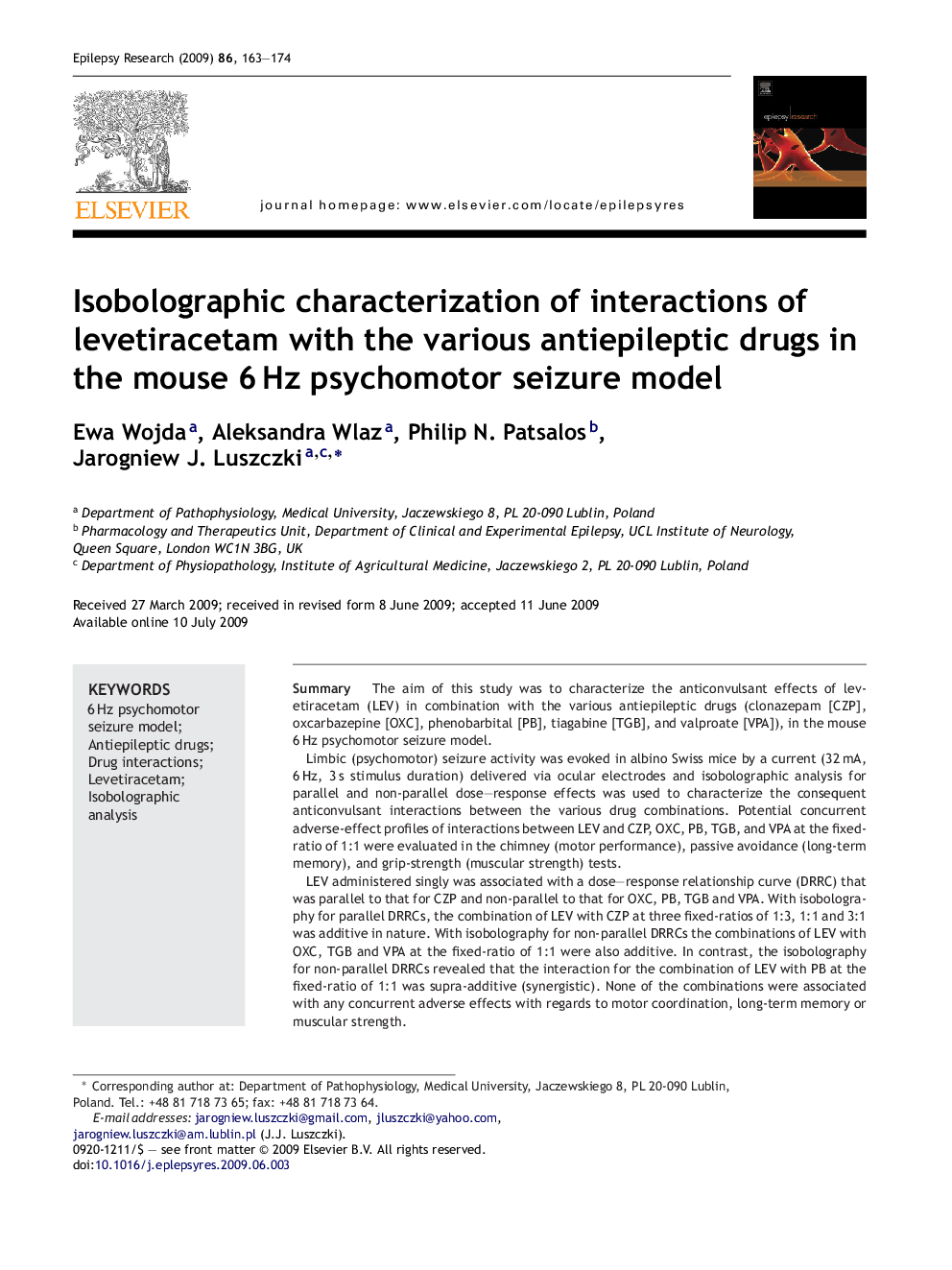| Article ID | Journal | Published Year | Pages | File Type |
|---|---|---|---|---|
| 3052758 | Epilepsy Research | 2009 | 12 Pages |
SummaryThe aim of this study was to characterize the anticonvulsant effects of levetiracetam (LEV) in combination with the various antiepileptic drugs (clonazepam [CZP], oxcarbazepine [OXC], phenobarbital [PB], tiagabine [TGB], and valproate [VPA]), in the mouse 6 Hz psychomotor seizure model.Limbic (psychomotor) seizure activity was evoked in albino Swiss mice by a current (32 mA, 6 Hz, 3 s stimulus duration) delivered via ocular electrodes and isobolographic analysis for parallel and non-parallel dose–response effects was used to characterize the consequent anticonvulsant interactions between the various drug combinations. Potential concurrent adverse-effect profiles of interactions between LEV and CZP, OXC, PB, TGB, and VPA at the fixed-ratio of 1:1 were evaluated in the chimney (motor performance), passive avoidance (long-term memory), and grip-strength (muscular strength) tests.LEV administered singly was associated with a dose–response relationship curve (DRRC) that was parallel to that for CZP and non-parallel to that for OXC, PB, TGB and VPA. With isobolography for parallel DRRCs, the combination of LEV with CZP at three fixed-ratios of 1:3, 1:1 and 3:1 was additive in nature. With isobolography for non-parallel DRRCs the combinations of LEV with OXC, TGB and VPA at the fixed-ratio of 1:1 were also additive. In contrast, the isobolography for non-parallel DRRCs revealed that the interaction for the combination of LEV with PB at the fixed-ratio of 1:1 was supra-additive (synergistic). None of the combinations were associated with any concurrent adverse effects with regards to motor coordination, long-term memory or muscular strength.LEV is associated with favorable anticonvulsant synergism with PB and is additive with regards to CZP, OXC, TGB and VPA in the mouse 6 Hz psychomotor seizure model.
